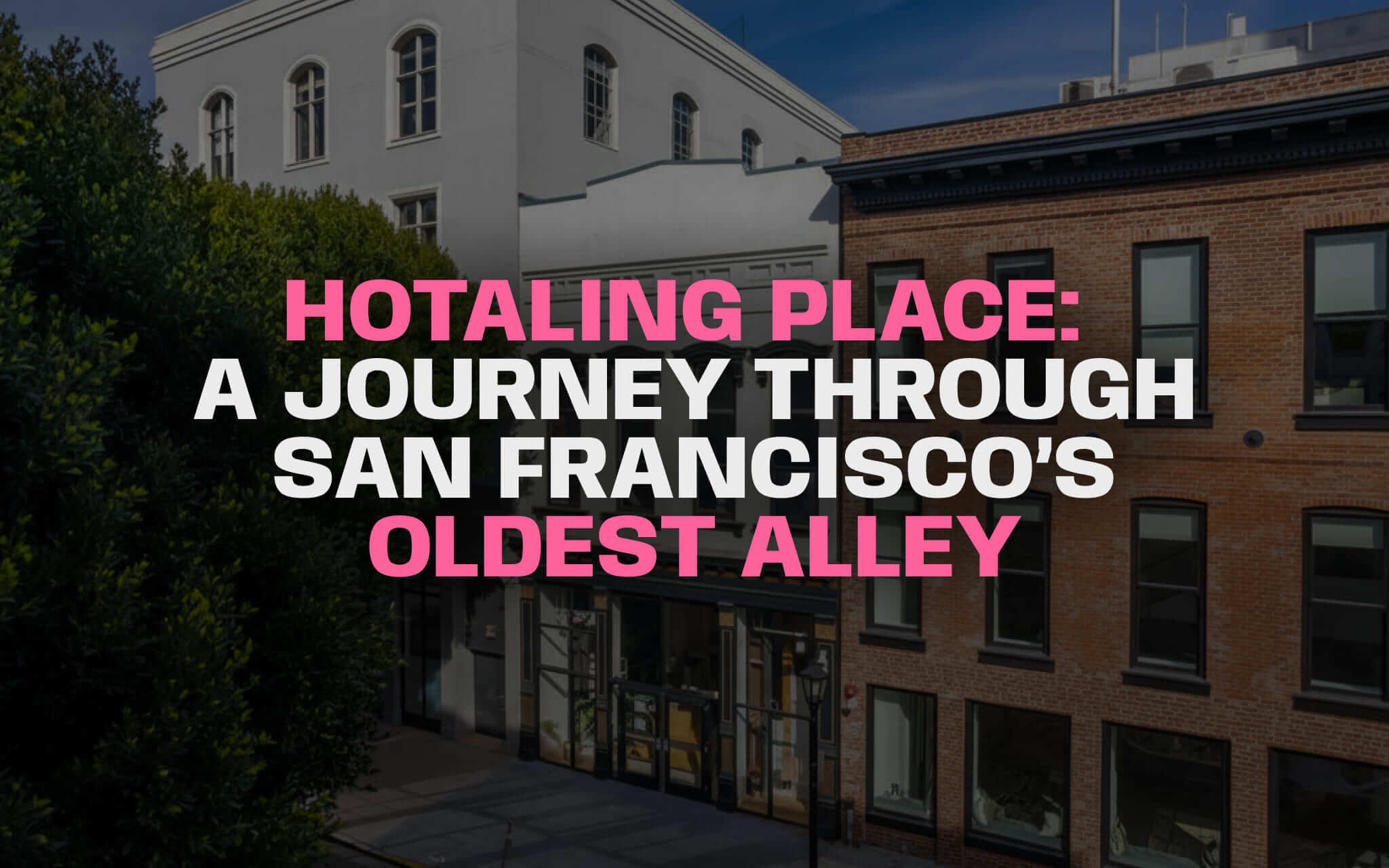
In the very fabric of San Francisco, hidden beneath towering skyscrapers and modern thoroughfares, lies the enduring charm of Hotaling Place. This narrow alleyway, with its weathered cobblestones and vintage brick facades, transports visitors back to an era when the city was just beginning to carve its identity along the Pacific. Each stone underfoot seems to echo the footsteps of merchants, dockworkers, and residents who once navigated its compact passageway.
As one of San Francisco’s oldest surviving alleys, Hotaling Place offers a rare, unfiltered glimpse into the past. Unlike much of the city that has been reshaped by the relentless march of time, this intimate stretch has preserved its original character. Visitors strolling through are treated to a visual narrative of 19th-century urban life, complete with historic structures that have withstood both natural disasters and urban redevelopment.
The ambiance of Hotaling Place invites reflection. The alley’s quiet presence amid the bustling city serves as a solemn witness to San Francisco’s journey through booms, fires, and rebirths. Each building, each corner of Hotaling Place stands as a testament to the resilience and fortitude that define San Francisco’s storied history.
The Great Fire and Hotaling Place’s Survival
When the 1906 earthquake struck San Francisco, the ensuing fires ravaged nearly the entire cityscape. Yet, against all odds, Hotaling Place remained largely untouched. The sturdy brick warehouses, once brimming with barrels and goods, resisted the inferno that consumed surrounding districts, preserving a piece of San Francisco’s architectural heritage.
The survival of Hotaling Place during such widespread devastation was nothing short of miraculous. While entire neighborhoods lay in smoldering ruins, this narrow alleyway emerged as a rare survivor. Its endurance provided not only a physical link to the city’s pre-quake past but also a symbolic reminder of San Francisco’s capacity to endure unimaginable trials.
In the years that followed, the preserved state of Hotaling Place attracted historians, architects, and curious visitors alike. Its continued existence offers a powerful visual juxtaposition against the sleek, modern skyline of today’s San Francisco, making it an essential stop for those seeking to understand the city’s layered history.
Hotaling & Co. and the Whiskey Legacy
At the heart of Hotaling Place’s identity is Anson Parsons Hotaling, the whiskey merchant whose name the alley bears. His warehouse, filled with barrels of whiskey, famously survived the 1906 disaster, leading to the quip that while churches and homes perished, ‘If, as they say, God spanked the town for being over-frisky, why did He burn His churches down and spare Hotaling’s whiskey?’
This enduring anecdote cemented Hotaling Place’s legendary status within San Francisco’s collective memory. The whiskey business not only contributed to the city’s booming trade but also intertwined with its cultural folklore. The name “Hotaling” became synonymous with resilience and good fortune in the face of adversity.
Today, the legacy of Anson Hotaling continues to echo throughout the alley. Modern visitors walking along Hotaling Place can still sense the entrepreneurial energy that once fueled its success. The preservation of these structures offers a tactile connection to a time when commerce and survival walked hand in hand in San Francisco.
The Evolving Identity of Hotaling Place
As San Francisco evolved into a global metropolis, Hotaling Place adapted without losing its historic soul. The alley’s intimate scale and rich architectural details have made it a sought-after location for boutique businesses, upscale offices, and artistic ventures that seamlessly blend old-world charm with contemporary sensibilities.
Walking through Hotaling Place today, visitors encounter a vibrant fusion of past and present. The original brickwork frames modern storefronts, while leafy courtyards and ironwork balconies provide picturesque settings for casual exploration. The alley’s unique ambiance attracts photographers, history enthusiasts, and anyone seeking a quieter slice of San Francisco life.
Despite the city’s constant reinvention, Hotaling Place remains a pocket of calm and character. Its ability to maintain historical authenticity while embracing modern functionality exemplifies the delicate balance that defines San Francisco’s enduring appeal.
A Museum of Illusions Among the History
Unlike the historical resonance of Hotaling Place, the Museum of 3D Illusions introduces an unexpected twist of modern entertainment. This interactive destination draws visitors into surreal experiences, offering playful contrasts to the alley’s historic backdrop. Guests may find themselves soaring on a magic carpet with the Golden Gate Bridge stretching beneath them, slipping from the snapping jaws of a monstrous shark, or weaving through menacing hordes of lunging zombies.
The museum’s vibrant displays turn perception on its head, inviting guests to become part of the art itself. Unlike traditional galleries, the Museum of 3D Illusions encourages active participation, making it a perfect complement to the reflective nature of Hotaling Place’s surroundings. Families, friends, and solo explorers alike find moments of laughter and amazement within its halls.
This unique juxtaposition of old and new reinforces San Francisco’s identity as a city that honors its past while embracing imaginative innovation. The Museum of 3D Illusions stands as a lively counterpoint to the stately calm of Hotaling Place, creating a diverse and memorable visitor experience.
FAQ
Who was Anson Hotaling, and how is he connected to Hotaling Place?
Anson Hotaling was a whiskey merchant whose warehouse on Hotaling Place survived the 1906 disaster. His name became synonymous with the alley, and his business's survival remains a famous part of San Francisco's resilient history.
Can visitors experience modern attractions near Hotaling Place in San Francisco?
Yes, after exploring Hotaling Place in San Francisco, visitors can also explore nearby modern attractions like the Museum of 3D Illusions, where interactive exhibits create playful, immersive experiences contrasting the alley’s rich historical backdrop.


